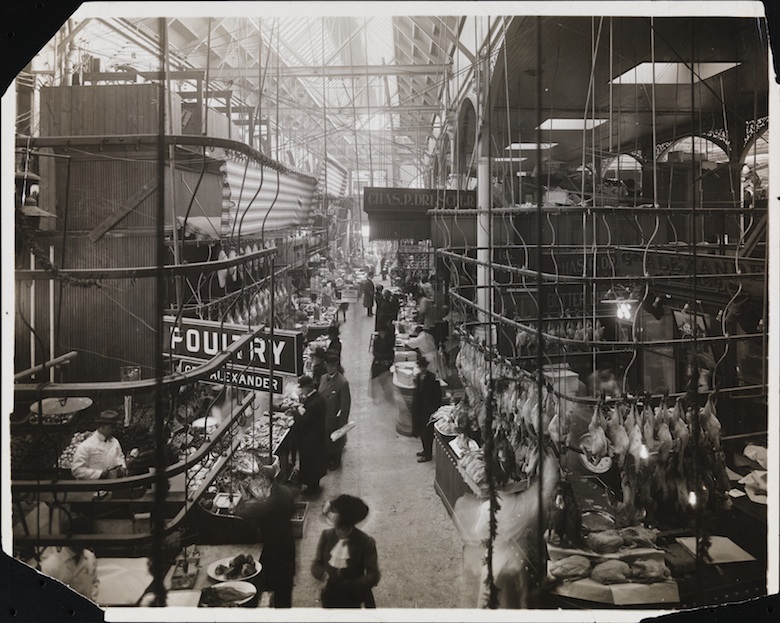These days, New Yorkers buy holiday ingredients all over town. Shoppers hit Union Square for celeriac and shallots, Fairway for kosher salt and French butter, Whole Foods for gluten-free breadcrumbs and eco aluminum foil, even the bodega for a Pillsbury piecrust and a can of cranberry sauce.
But in the era before Butterball, everyone in New York did all their shopping in one place: Washington Market.
From early in the 19th century until well into the 20th, Washington Market was the place to procure practically all of New York’s ingredients. Sprawling over 50 acres on the Lower West Side, it was one of the busiest wholesale and retail markets in the country. At its peak, over a thousand vendors hawked their goods there, offering everything from cod to caviar, from bluefish to bear steaks.
Vendors catered to everyone from proprietors of high-class hotels to hard-bargaining tenement dwellers. Stalls were heaped high with cranberries from Cape Cod, sweet potatoes and Brussels sprouts from New Jersey and potatoes from Long Island, which arrived daily by wagon, rail and boat. Since quality and prices fluctuated dramatically, the city papers’ market reports were hotter than celebrity gossip, especially in the days before Christmas.
In 1880, the market moved 12 tons of turkeys on Christmas Eve alone. The bird’s popularity was due in part to its relative cheapness. Until the early 20th century, Canvasback ducks were considered the gold standard for Yuletide meals—but a pair of ducks cost 100 bucks in today’s dollars. For those who were truly down and out, vendors peddled salted codfish, the “poor man’s turkey.”




